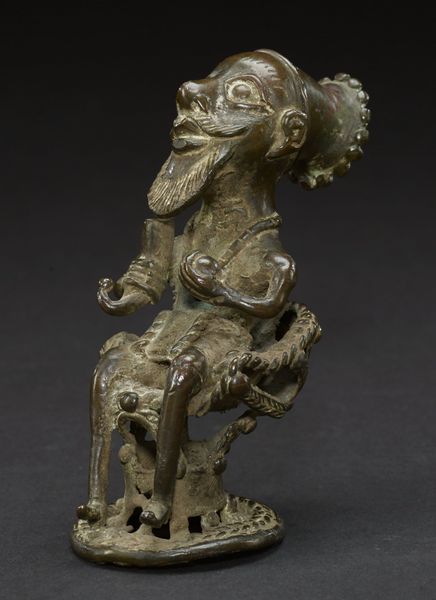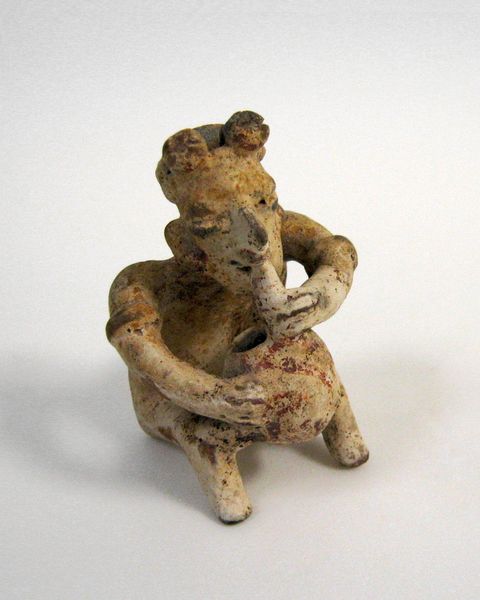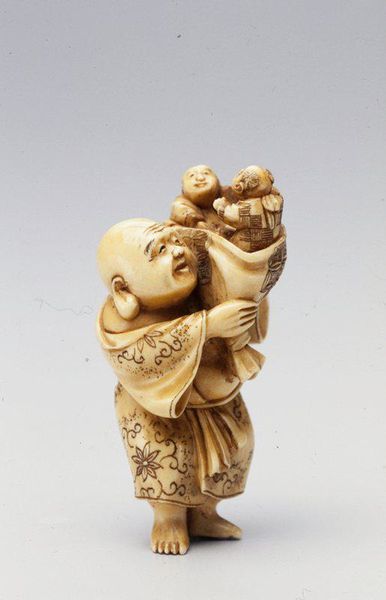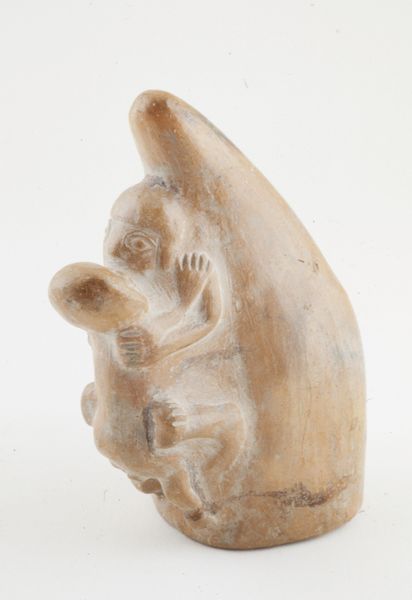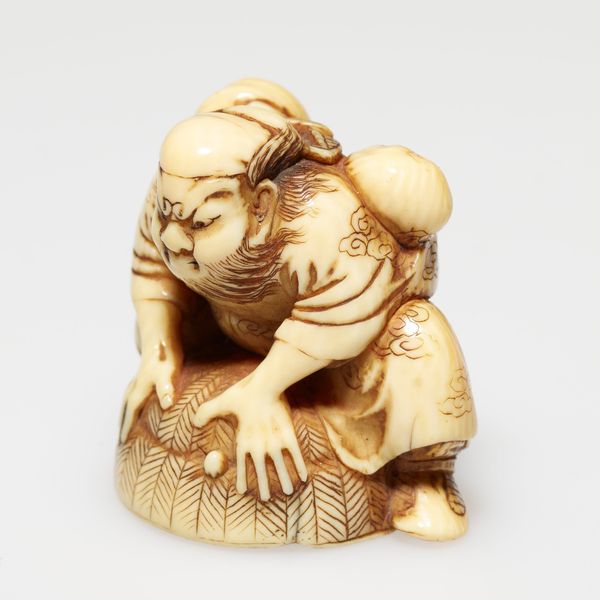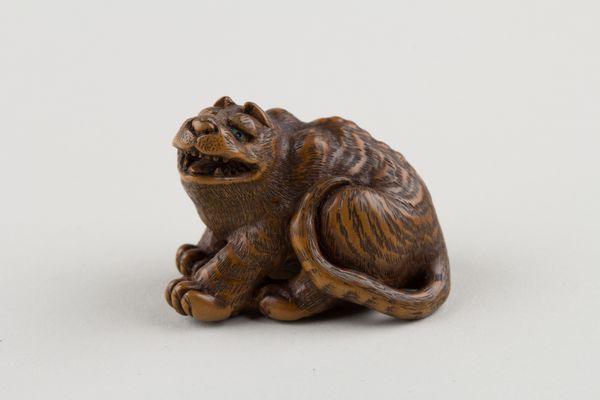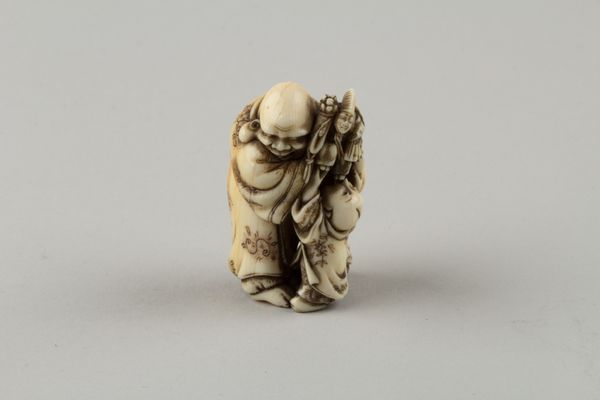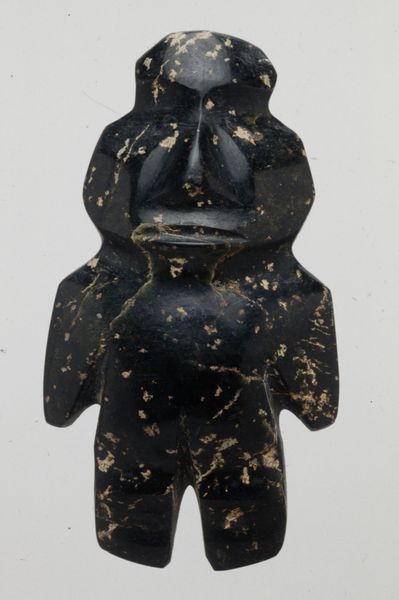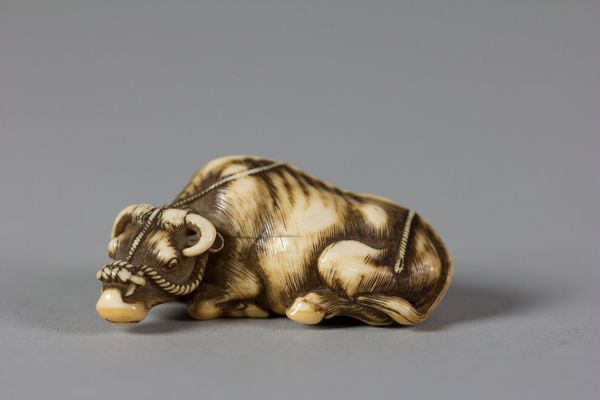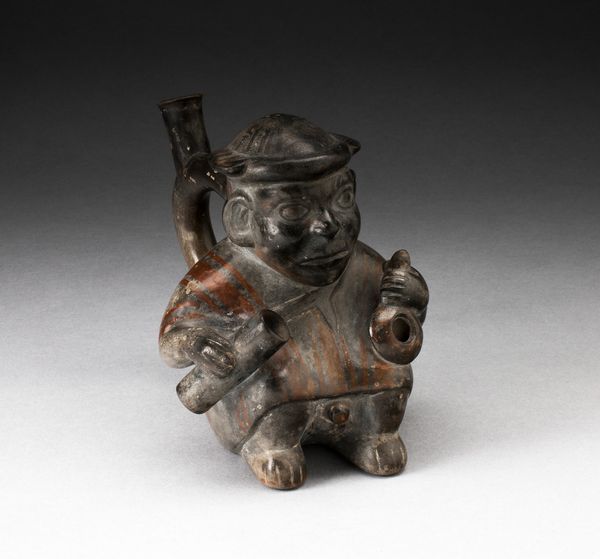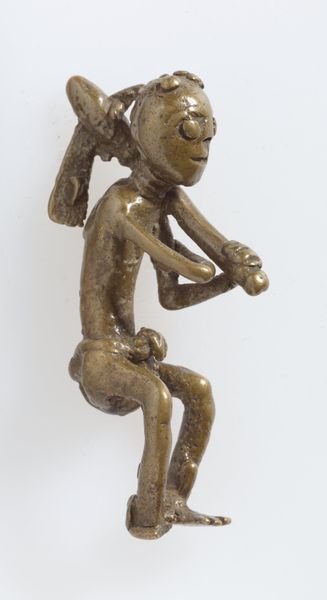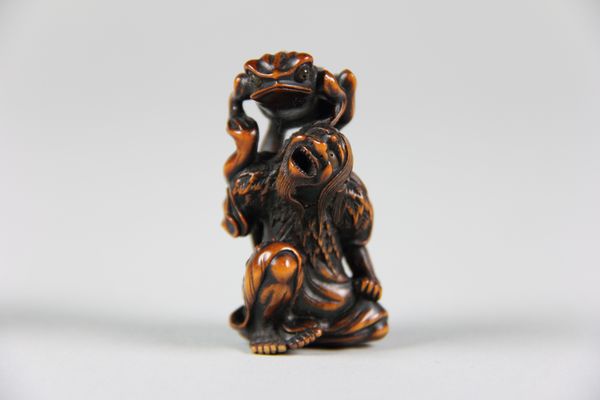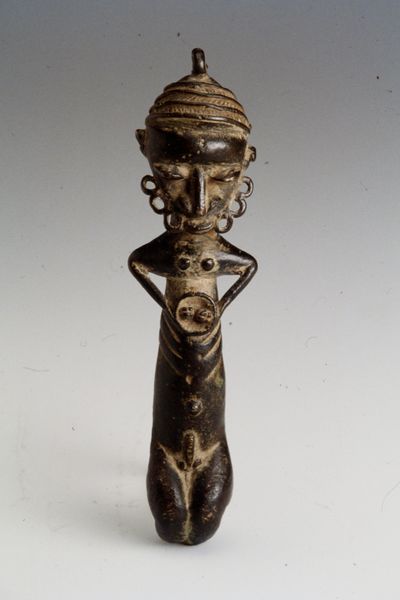
sculpture, ivory
#
sculpture
#
asian-art
#
japan
#
sculpture
#
ivory
Dimensions: 2 x 15/16 x 1 1/4in. (5.1 x 2.4 x 3.2cm)
Copyright: Public Domain
Editor: This ivory carving, titled "Shōki", dates from around the mid-19th century, and is by Kaigyokusai Masatsugu. The figure's grimace is so intense, almost unsettling, but what strikes me most is the minute detail considering the small scale of the sculpture. What can you tell us about it? Curator: Shōki, the Demon Queller, represents far more than just a fearsome face. His image taps into a deep well of cultural anxieties, particularly concerning disease and misfortune. Traditionally, Shōki is displayed to ward off evil spirits. What details of his attire or posture stand out to you? Editor: His grip on the sword is incredibly tight, and he’s standing over a small demon figure that he’s clearly subdued. It definitely conveys authority. Does this stance link back to his legendary origins? Curator: Precisely. Legend says Emperor Xuanzong of Tang China saw Shōki in a dream, defeating demons. He then ordered his likeness to be painted and disseminated, creating a powerful protective symbol. The imagery then traveled from China to Japan and became popular. Think about the psychological effect— does encountering Shōki offer reassurance or intimidation? Editor: I think it is a combination of both! The intensity can feel off-putting initially, but perhaps the implied protection outweighs the fear. So, seeing the image repeatedly would create reassurance. Curator: Exactly! It’s a fascinating example of how a cultural image, through its embedded story and forceful depiction, becomes a talisman. Even today, recognizing this imagery evokes a feeling linked to generations of cultural memory. Editor: That's amazing - it's like the sculpture is charged with centuries of hope for protection against the unseen. It's a new perspective. Curator: Yes. Symbols shape our reality.
Comments
No comments
Be the first to comment and join the conversation on the ultimate creative platform.
